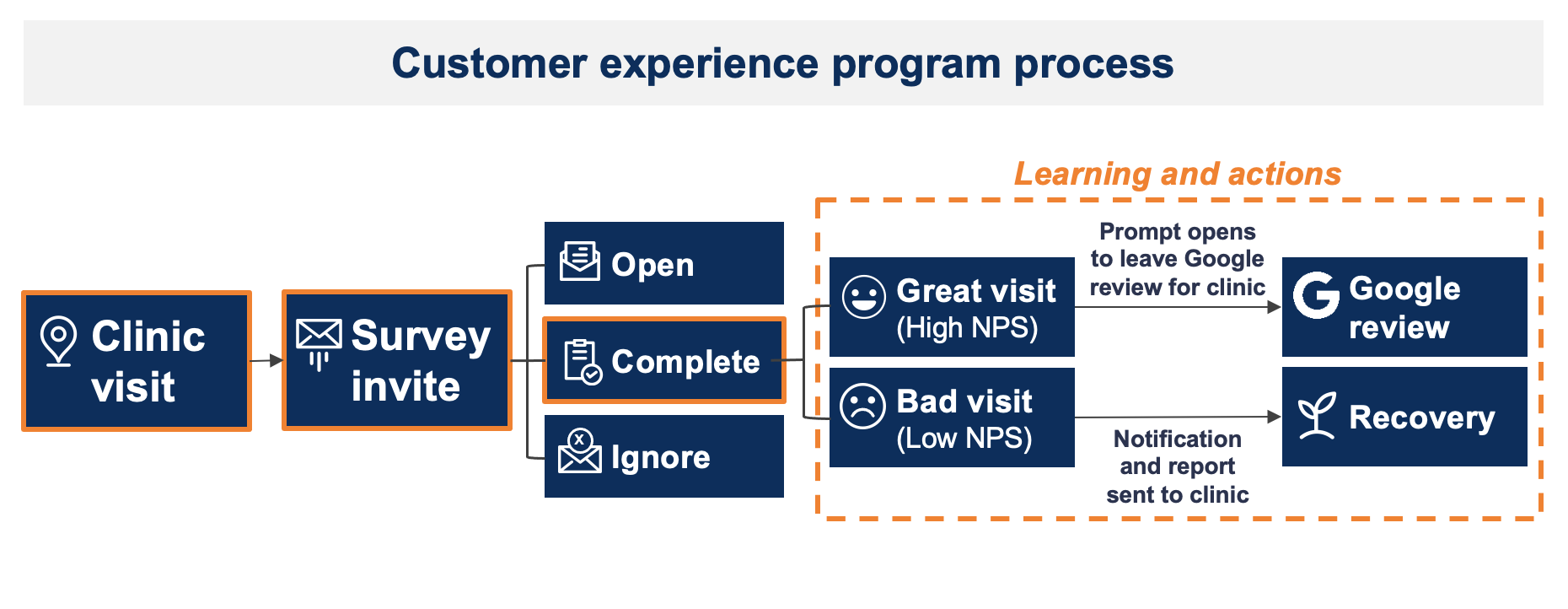
Net Promoter Score (NPS) programs can drive greater ROI by integrating Voice of Customer studies into the regular cadence of NPS measurement.
“Voice of Customer” (VoC) studies and “Net Promoter Score” (NPS) programs are both customer feedback methods used by companies to gauge customer satisfaction and loyalty. However, they traditionally differ in their approach and purpose.
“Voice of Customer” studies are designed to gather detailed feedback from customers about their experiences with a product or service. These studies often involve surveys or interviews and seek to identify the specific needs, wants, and pain points of customers. The goal of “Voice of Customer” studies is to understand the customer’s perspective, improve the customer experience, and ultimately drive customer loyalty and retention.
On the other hand, “Net Promoter Score” programs focus on measuring customer loyalty by asking customers a single question such as: “How likely are you to recommend our product or service to a friend or colleague?” or “How likely are you to shop at this store again in the next month?”* Customers are asked to rate their likelihood on a scale of 0 to 10, with those who respond with a 9 or 10 considered “promoters” and those who respond with a 6 or below considered “detractors.”
The NPS is then calculated by subtracting the percentage of detractors from the percentage of promoters. The goal of NPS is to measure customer loyalty and use that information to drive business growth by increasing the number of promoters and decreasing the number of detractors.
Net Promoter Score programs, moreover, can be integrated directly into service improvement and marketing tactics. By allowing customers responses to trigger different actions.
For example, our work with an organization with outlets across the country pushed low scores to a recovery channel where the call centre, regional manager or clinic lead would quickly get-back to the unhappy customer, learn more and resolve and recover the customer. While those customers who scored the company a 9 or 10 were asked to complete a Google review!

In summary, “Voice of Customer” studies are designed to gather detailed feedback to improve the customer experience, while “Net Promoter Score” programs focus on measuring customer loyalty to drive business growth and can be directly integrated into activities that help the company grow.
Interestingly, Voice of Customer studies can grow out of NPS programs. We have worked with several organizations to both design and implement NPS programs. Often, we will then add more questions; probing more deeply across specific areas of the business or the customer journey.
These “longer-form” questionnaires are typically provided to customers as an option to complete. For example, the NPS program for a merchant with many departments might first ask what areas the customer shopped in today.
If they shopped in ready-to-wear, we may add on 2-3 ready to wear service questions after they completed their two NPS questions (e.g., “Likelihood to Recommend 0-10” and “Why are you this likely to recommend?”)**
So, the RTW merchant may want to know if the customer noticed the new private brand apparel or about their interaction with the sales associate in the department. By offering merchants the ability to receive near real time feedback from customers gives these clients a strategic advantage.
For help on choosing the right path for your organization, please reach out to me at david.saffer@satovconsultants.com
*Many associate NPS with the “1-question” on likelihood to recommend. However, the best programs are designed to have a first phase wherein the organizations asks many different questions to see which best correlates to future sales growth. For example, “Likelihood to shop at store again may be a better predictor of growth than “likelihood to refer”. Also, the 0-10 rating question is or ought to always be followed-up with and open-ended question asking “Why” the customer feels this way.
**On receipt-based trigger NPS, we know from what departments items were purchased and can ask about those; but we won’t know if they shopped/didn’t buy from another department.
